The Wild Awaits: Step Into Africa’s Greatest Adventure
Close your eyes. Imagine the first golden light of dawn creeping over the African savanna. The air is crisp, filled with the distant call of a fish eagle. Somewhere in the bush, a lion’s deep roar echoes—a reminder that you’re no longer in the civilized world. You’re in Kenya, where the earth pulses with life, where every sunrise brings a new thrill, and where the wilderness writes its own rules.
This is a wildlife safari—not just a vacation, but a journey into the soul of the wild.
If you’ve ever dreamed of witnessing elephants march across open plains, cheetahs sprint at full speed, tracking a leopard through the bush, or millions of wildebeest braving crocodile-infested rivers , this guide is your first step.
By the end, you’ll know:
✔ What a safari really is (beyond just jeeps and lions)
✔ Exactly what to expect—from daily routines to heart-stopping wildlife encounters
✔ Where to go, when to visit, and how to prepare like a pro
✔ The secret moments most first-timers miss (but you won’t)
Let’s begin.
Chapter 1: What Is a Wildlife Safari?
A safari (Swahili for “journey”) is an expedition into the wilderness to observe animals in their natural habitat. Unlike a zoo, where creatures are caged, a safari puts you in their world—raw, untamed, and breathtaking.
“ But this isn’t just any trip—it’s an expedition into untamed nature, where humans are mere spectators in a world ruled by animals.
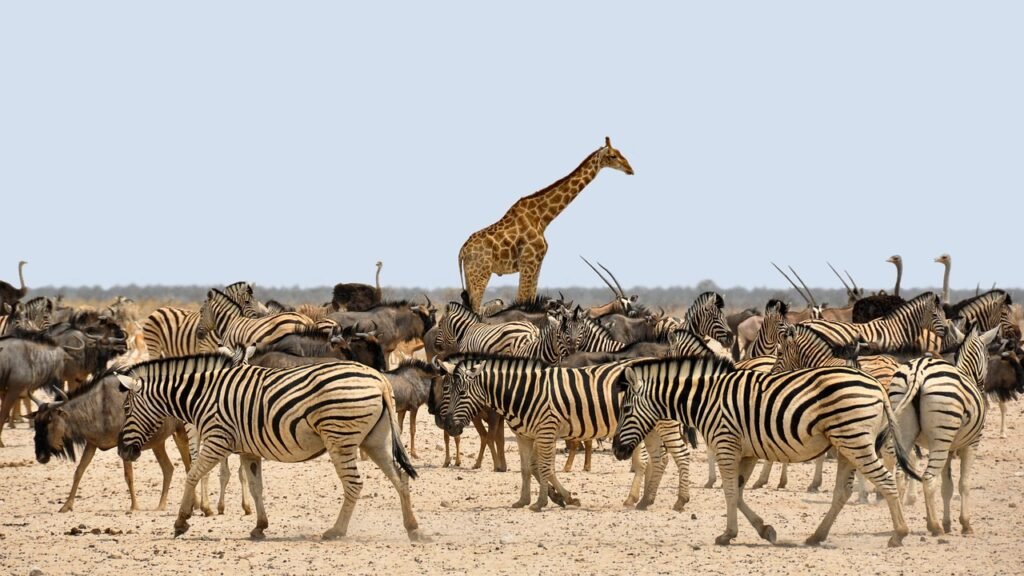
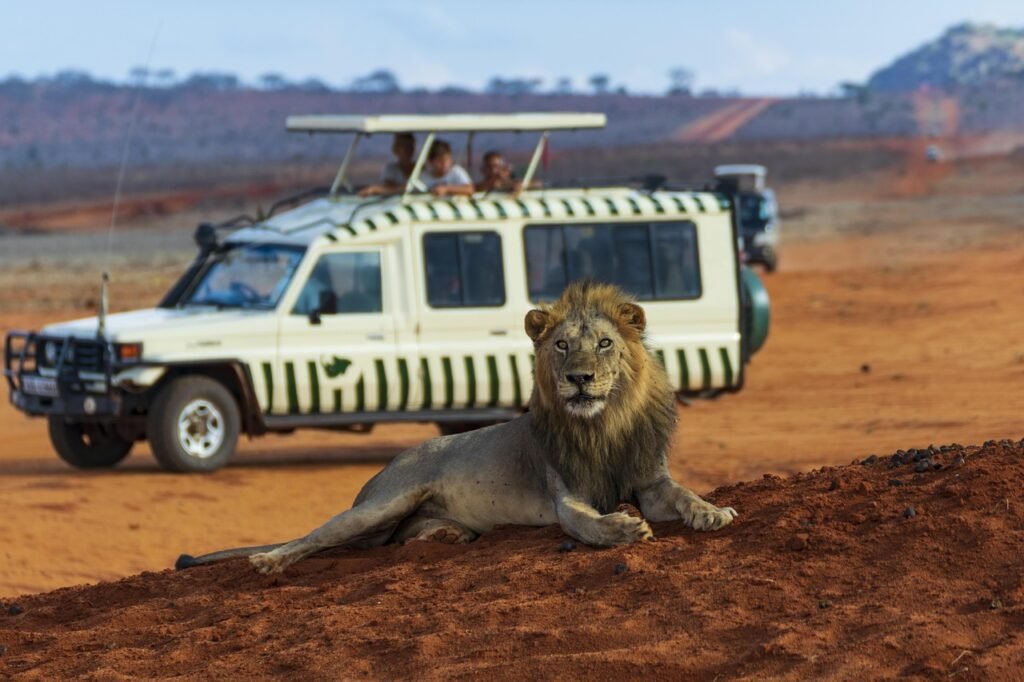
A wildlife safari is a travel experience where you journey into wild, natural areas—typically in Africa—to observe animals in their natural habitat.
It’s not just a vacation—it’s an immersive adventure into the wilderness, where you’re surrounded by raw nature and get to witness the lives of wild animals, untouched landscapes, and ancient ecosystems. Think of it as stepping into a live nature documentary.
What Does a Safari Actually Include?
- Game Drives – The backbone of every safari. You’ll ride in a rugged, open-sided 4×4 with a pop-up roof, driven by an expert guide who can spot a leopard hidden in a tree from a mile away.
-
- Morning drives (6 AM – 10 AM) – When predators are most active.
- Evening drives (4 PM – 7 PM) – Golden light, cooling temps, and big cats waking up.
- Where You’ll Sleep – From luxury lodges with infinity pools overlooking watering holes to tented camps where you hear lions roar at night, Kenya offers every style.
- Luxury: Think private decks, gourmet meals, and spa treatments in the wild.
- Mid-range: Comfortable, authentic, with hot showers and great service.
- Budget: Basic but unforgettable—fall asleep to hyenas whooping nearby.
- Walking Safaris & Night Drives – For the bold. Walking safaris let you track animals on foot (with armed guides), while night drives reveal bushbabies, genets, and hunting lions.
- Cultural Visits – Meet the Maasai, Kenya’s legendary warrior tribe, and learn their ancient ways of coexisting with wildlife.
Chapter 2: Kenya’s Wildlife – What You’ll Actually See (And Where)
Kenya isn’t just “good” for wildlife—it’s one of the best places on Earth to see animals in the wild.
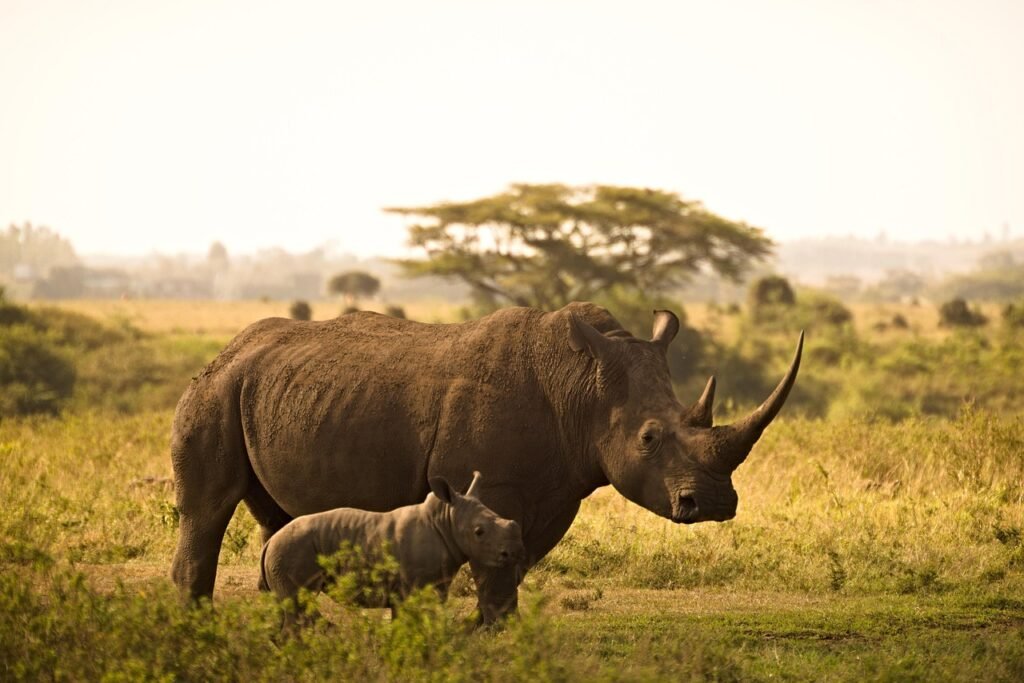
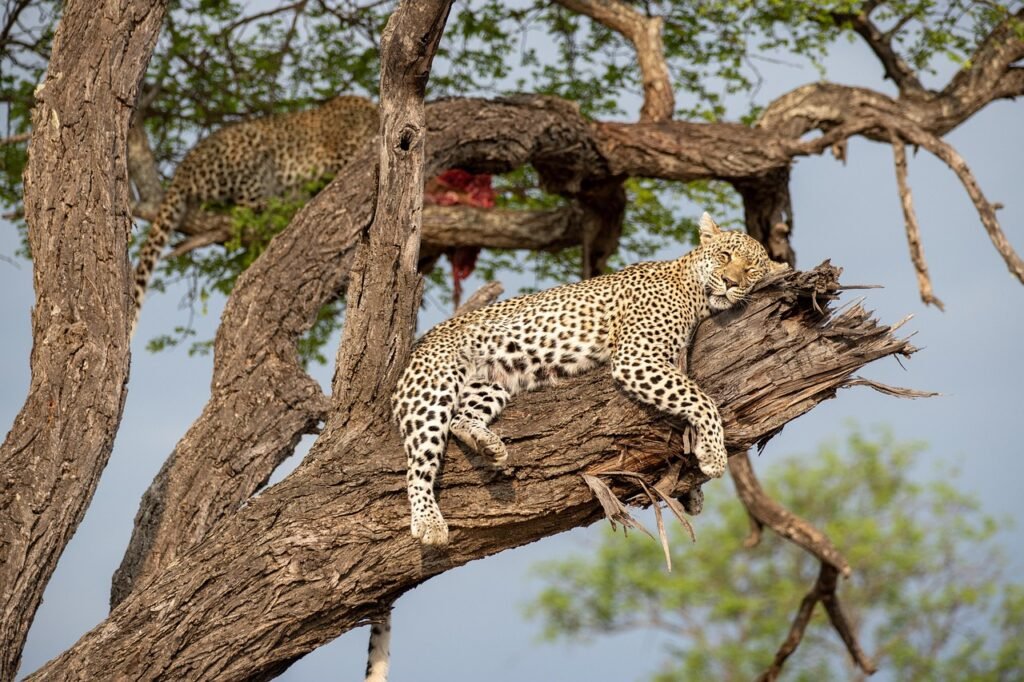
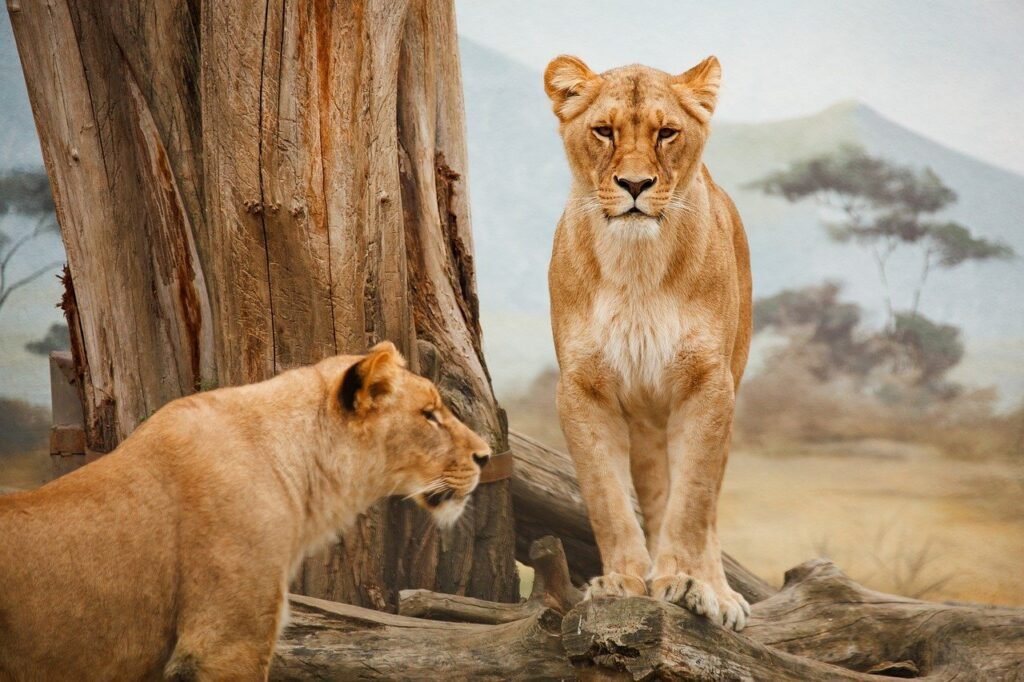
The Big Five (And Where to Find Them)
- Lion – The iconic king. Best seen in:
- Maasai Mara (especially during the Great Migration, July-Oct)
- Amboseli (with Kilimanjaro in the background)
- Leopard – The elusive phantom of the bush. Look for them in:
- Samburu National Reserve (famous for leopard sightings)
- Maasai Mara (especially around riverine forests)
- Elephant – Gentle giants. Best spots:
- Amboseli (massive herds with Kilimanjaro views)
- Tsavo (home to Kenya’s famous “red elephants”)
- Buffalo – Don’t underestimate them—they kill more hunters than lions. Find them in:
- Nairobi National Park (yes, wild buffalo just outside the city!)
- Lake Nakuru
- Rhino – Critically endangered. Your best bets:
- Ol Pejeta Conservancy (home to the last two northern white rhinos)
- Lewa Wildlife Conservancy (a rhino stronghold)

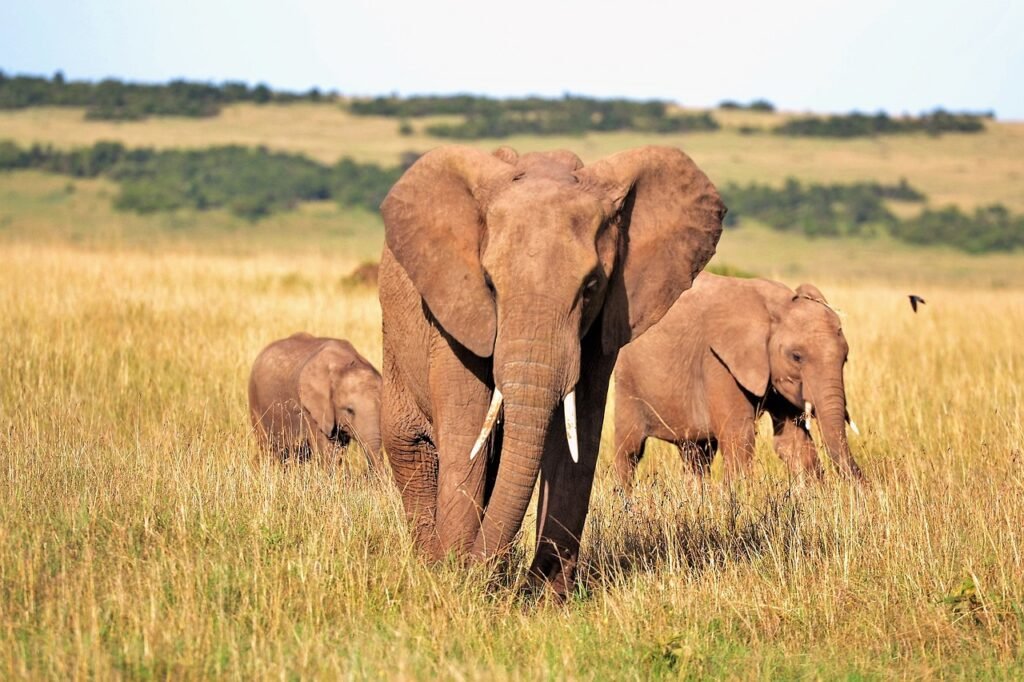
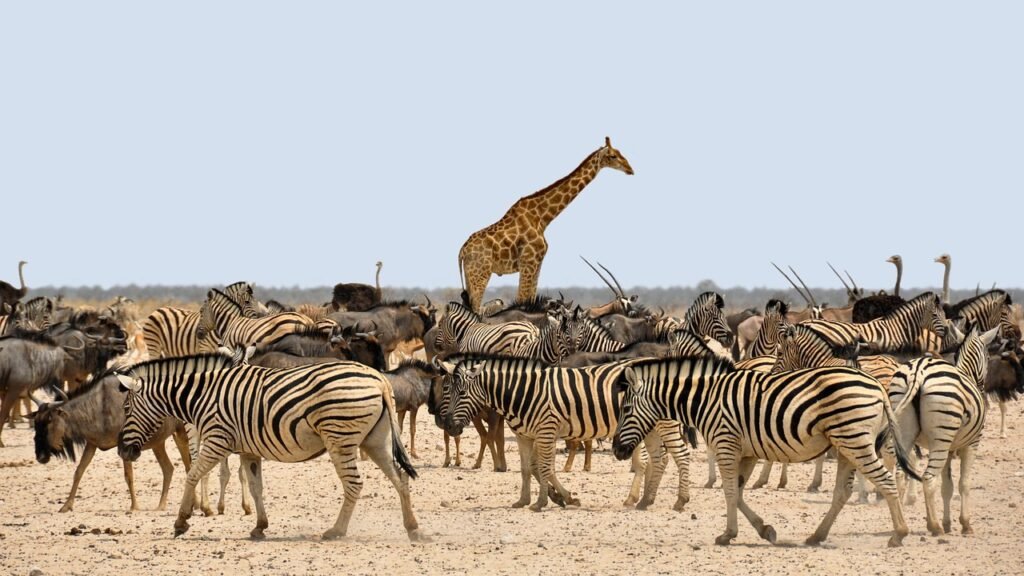
Beyond the Big Five: Kenya’s Hidden Gems
- The Great Migration (July-Oct) – Over 2 million wildebeest and zebra charge across the Mara River, dodging crocodiles in a life-or-death spectacle.
- Cheetahs on the Hunt – The Maasai Mara’s open plains are the best place to see them sprint.
- Hippos & Crocs – Visit Lake Naivasha or the Mara River to see them up close.
- Rare Species – Grevy’s zebra, reticulated giraffe, and the “Samburu Special Five” (found only in the north).
Chapter 3: How a Safari Actually Works (Step-by-Step for Beginners)
Step 1: Choosing Your Safari Type
| Safari Type | Best For | Experience Level |
| Luxury Safari | Honeymooners, comfort seekers | Beginner-friendly |
| Mid-Range Safari | Balanced budget & experience | Great for first-timers |
| Budget Camping Safari | Adventurous souls | Requires some flexibility |
| Private Safari | Families, photographers | Fully customizable |
Step 2: When to Go
| Season | When? | Why Go? | Drawbacks? |
| Peak Season (June-Oct) | Dry season, Great Migration | Best wildlife viewing | Crowded, expensive |
| Shoulder Season (Nov-Dec) | Short rains | Fewer tourists, lush scenery | Some rain, but brief |
| Low Season (Mar-May) | Long rains | Lowest prices, baby animals | Muddy roads, some lodges closed |
Step 3: What to Pack (The Essentials)
- Clothing: Neutral colors (khaki, green, beige—no bright colors!)
- Gear: Binoculars (a must), DSLR camera with zoom lens, power bank
- Health: Malaria pills, sunscreen, hat, and reusable water bottle
- Extras: A good book (for downtime), journal, and patience (wildlife doesn’t follow schedules!)
Step 4: Daily Safari Life (What to Expect)
✔ 5:30 AM Wake-Up Call – Coffee, then off for the morning drive.
✔ 10 AM Brunch Back at Camp – Feast after spotting lions on the hunt.
✔ Midday Siesta – Nap, swim, or watch animals at the waterhole.
✔ 4 PM Evening Drive – Sunset cocktails in the bush (yes, really).
✔ 8 PM Dinner Under the Stars – Share stories of the day’s adventures.
Chapter 4: Pro Tips for First-Timers (What Most Guides Won’t Tell You)
- The Early Bird Sees the Lions – Animals are most active at dawn. Don’t skip the morning drive!
- Look for the Little Things – Sometimes the best sightings are a chameleon on a branch or a dung beetle rolling its prize.
- Silence is Golden – Turn off your phone, listen to the bush, and let the wild come to you.
- Your Guide is Your Guru – They know where the leopards hide. Tip them well!
Final Thoughts: Your Adventure Begins Now
A safari isn’t just a trip—it’s a rite of passage. It’s the moment you lock eyes with a wild lion and realize how small we truly are in this vast, untamed world.
Kenya is waiting. The animals are calling. Will you answer?
Ready to Plan Your Safari? Drop your questions below—we’ll help you craft the perfect wild adventure! 🐘🌍
New chat
